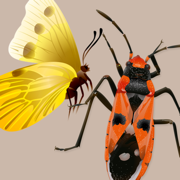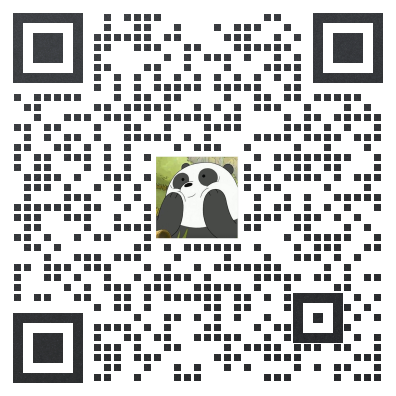Key to Insect Orders - Revised
开发者: LucidMobile
中国
版本统计
1363天7小时
最新版本上线距今
0
近1年版本更新次数
2019-02-08
全球最早版本上线日期
版本记录
版本: 0.2.1
版本更新日期
2021-03-26

Key to Insect Orders - Revised
更新日志
Updated to the latest Lucid engine which includes several bug fixes应用描述
Insects make up the vast bulk of species diversity, with just over a million described species organized into about thirty major subgroups called orders. Orders are in turn divided into families, families are divided into genera, and genera are divided into species. Properly defined; orders, families and genera are each groups of species that have descended from a unique common ancestor, as a result of which they share similar structural characteristics and have certain biological attributes in common.
Not all insect orders are equal in species number; some have just a few hundred species while the larger orders have hundreds of thousands of species. Most insects are in just four large orders: Diptera, Coleoptera, Lepidoptera and Hymenoptera. The range of structural characteristics and biological features tends to be broader in the more species-rich orders.
Predictions about the biology, behaviour and ecology of an insect can often be made once you know its order. But how can you know the order to which an insect belongs? Insects can be identified in various ways. Comparing a specimen with a book of illustrations of identified insects is one way. Using a printed key is another way. This Lucid Mobile key combines the advantages of these methods and adds a new dimension of simplicity and power to the process of identification.
This simple key aims to identify most common adult insects to the level of order. It has been designed for a range of users, including advanced secondary students, beginning undergraduates and others interested in entomology, and includes information about the structure and biology of insects as well as their identifying features. Three of the groups included in this key (Protura, Collembola and Diplura) are six-legged arthropods treated as insects in the vernacular sense, but now usually formally classified in their own order, outside the order Insecta.
How can you tell if an insect is an adult so it can be identified using this key? That is a simple question without a simple answer. If your insect has fully-developed, functional wings then it is an adult. However, some adult insects have reduced, non-functional wings and others have no wings at all. In these cases the adult forms have fully developed genitalia at the apex of the abdomen. Many, but not all, nymphal or immature forms are identifiable using the same features used to identify adults.
The 'Key to Insect Orders' was originally created by staff at the Department of Entomology at the University of Queensland, Brisbane, Australia (Gordon Gordh; David Yeates; Tony Young; Sue McGrath), based on the simplified keys to insect Order found in Collecting, Preserving and Classifying Insects by E.C. Dahms, G.B. Monteith and S. Monteith (Queensland Museum, 1979), Worms to Wasps by M.S. Harvey and A.L. Yen (Oxford University Press, 1989) and A Field Guide to Insects in Australia by P. Zborowski and R. Storey (Reed Books, 1995).
This new edition of Insect Orders has been revised by Professor Steve Marshall at the University of Guelph, Ontario, Canada.
This app was created using the Lucid suite of tools, for more information please visit https://www.lucidcentral.org预订版本: 0.1.1
版本更新日期
2019-02-08
预订转上架日期
2019-02-08
Key to Insect Orders - Revised
更新日志
暂无更新日志数据
应用描述
Insects make up the vast bulk of species diversity, with just over a million described species organized into about thirty major subgroups called orders. Orders are in turn divided into families, families are divided into genera, and genera are divided into species. Properly defined; orders, families and genera are each groups of species that have descended from a unique common ancestor, as a result of which they share similar structural characteristics and have certain biological attributes in common.
Not all insect orders are equal in species number; some have just a few hundred species while the larger orders have hundreds of thousands of species. Most insects are in just four large orders: Diptera, Coleoptera, Lepidoptera and Hymenoptera. The range of structural characteristics and biological features tends to be broader in the more species-rich orders.
Predictions about the biology, behaviour and ecology of an insect can often be made once you know its order. But how can you know the order to which an insect belongs? Insects can be identified in various ways. Comparing a specimen with a book of illustrations of identified insects is one way. Using a printed key is another way. This Lucid Mobile key combines the advantages of these methods and adds a new dimension of simplicity and power to the process of identification.
This simple key aims to identify most common adult insects to the level of order. It has been designed for a range of users, including advanced secondary students, beginning undergraduates and others interested in entomology, and includes information about the structure and biology of insects as well as their identifying features. Three of the groups included in this key (Protura, Collembola and Diplura) are six-legged arthropods treated as insects in the vernacular sense, but now usually formally classified in their own order, outside the order Insecta.
How can you tell if an insect is an adult so it can be identified using this key? That is a simple question without a simple answer. If your insect has fully-developed, functional wings then it is an adult. However, some adult insects have reduced, non-functional wings and others have no wings at all. In these cases the adult forms have fully developed genitalia at the apex of the abdomen. Many, but not all, nymphal or immature forms are identifiable using the same features used to identify adults.
The 'Key to Insect Orders' was originally created by staff at the Department of Entomology at the University of Queensland, Brisbane, Australia (Gordon Gordh; David Yeates; Tony Young; Sue McGrath), based on the simplified keys to insect Order found in Collecting, Preserving and Classifying Insects by E.C. Dahms, G.B. Monteith and S. Monteith (Queensland Museum, 1979), Worms to Wasps by M.S. Harvey and A.L. Yen (Oxford University Press, 1989) and A Field Guide to Insects in Australia by P. Zborowski and R. Storey (Reed Books, 1995).
This new edition of Insect Orders has been revised by Professor Steve Marshall at the University of Guelph, Ontario, Canada.
This app was created using the Lucid suite of tools, for more information please visit https://www.lucidcentral.org










 京公网安备 11010502041000号
京公网安备 11010502041000号





